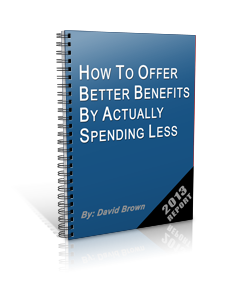
Small business is the backbone of this country and it pays the majority of the taxes. We built this country on the sweat and hard work of small businesses just like yours, and that trend will only continue. Small business has provided opportunity for immigrants and citizens alike to grow wealth and provide their families with prosperity the American way. And now with the new health care reform, a whole new opportunity opens up for the small business owner.
The challenges to their future prosperity grow every year. Cost increases and government regulation create challenges to small business trying to remain fiscally sound. Especially being in a state such as California where the cost of doing business is more expensive than the rest of the country, small business owners have to be creative, think quickly and operate outside of the box to maintain their livelihood.
How Will the Tax Credit Benefit You?
This tax credit can be an incredible boost to your bottom line, if you take the time and conduct the proper due diligence. To understand the impact, during tax years 2010 through 2013, the maximum credit realized by small business is 35%, with a rate of 25% for small, tax-exempt employers, such as charities. The great news for small business is the changes announced by the IRS for 2014. Upon implementation, small business will enjoy a 50% tax credit and a 35% tax credit for those charities. This will be a significant financial advantage for small businesses. A small business that pays $50,000 a year towards workers health care premiums (and qualifies for a 15% tax credit) can save $30,000 between 2010-2013. This is a significant savings for a small business, and gives an owner options for growth that they may not have anticipated otherwise.
For a small business employer who did not owe tax, you have the flexibility to carry your credit forward or back to other tax years. Having that flexibility is significant. Additionally, since the health care premiums are larger than the credit, you may still claim a business expense for the premium in excess of the credit amount. Small business can thus enjoy both a credit and a deduction for health care premiums paid. The small tax-exempt employers can similarly benefit from the program by getting the credit in the form of a refund, as long as it does not exceed your withholding tax or Medicare tax liability. Remember, you may still file an amended return to take advantage of this tax credit.
Do I Qualify for the Credit?
So as you can see, the impact of this exciting tax credit is significant to the bottom line of your business, so let’s see if you can claim it. Use this IRS Worksheet that outlines three simple steps to see if you qualify:
- 1. There should be no fewer than 25 full-time equivalent employees (FTEs).
- 2. Employees must have an average wage of less than $50,000 annually.
- 3. You must pay at least 50% of the cost of single rate cover for each of your employees.
Those three facts are reasonable, but commonly misunderstood by many. The IRS defines an FTE as anyone who works 30 hours per week or more, calculated monthly. Employee hours are added together, and then divided by 120 to get your FTE count
Finally, the smaller the business, the bigger the tax credit earned. By using the measures provided, if your small business has more than 10 FTEs or the average wage is more than $25,000, the amount of tax credit will be lower. If you need assistance determining if your small business or tax exempt organization qualifies for the credit, read the IRS Form for the three simple steps.
Now that we have introduced you to the benefits and advantage of this tax credit, we will explore the elements required to qualify.

Article Two
Small Business Owners: Are You Eligible for a Subsidy?




